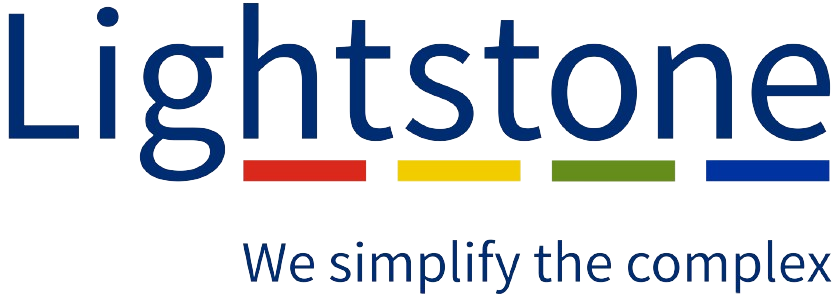New vehicle sales in April 2025 (42 379 units) were 11.8% up on April 2024, according to naamsa.
April sales were however 14.3% down on March. The month-on-month dip in April is not unusual in the domestic market given the number of public holidays contributing to fewer selling days.
Overall, the reduction in interest rates towards the end of 2024 buoyed the demand for new vehicles, and Lightstone anticipates 2025 sales will climb by around 7% from 2024’s numbers.
Passenger vehicle sales climbed 16.8% year-on-year in April to 30 081 units, and Light Commercial Vehicles (LCV) sales were 3.2% higher, reaching 9 959 units, when compared with April 2024.
New Vehicle sales

Overall sales for the opening four months of 2025 were 10.5% higher than for 2024, and 6% above sales for the same window in 2023. naamsa reported 186 411 units sold between January and April, of which around 84.2% represented dealer sales.
Passenger vehicle sales were up 19.3% year-on-year for the four months, but sales of LCVs have declined 6.9% compared to the same period in 2024. The car rental industry accounted for around 13.4% of new Passenger car sales in the January to April window, ahead of the 11% share in the 2024 window and the 11.4% in 2023.
January to April – Passenger and Light Commercial new vehicle sales

Lightstone anticipates the market will grow in 2025, but continued pressures throughout the macroeconomic environment, both locally and globally, could have an impact as the year progresses.
Domestic GDP is expected to grow at 1.3% in 2025, after coming in at 0.6% in 2024. While the outlook for the Rand is mixed against major global currencies, headline consumer inflation is expected to remain within the Reserve Bank’s 3% - 6% target range.
However, the good news for auto sales has been that the Monetary Policy Committee of the Reserve Bank has cut interest rates by a total of 75 basis points in the last ten months, and the view is there could be a further 25-point reduction before the end of the year.
Anticipated new vehicle sales for 2025 sit at around 552 500 units, of which 521 000 are Light Vehicles (Passenger and Light Commercial). Overall, growth in new vehicle sales is expected to end 2025 in the region of 7%. This is well above the -3% growth in new vehicle sales in 2024, which produced the weakest annual sales figures in three years.
New vehicle sales – 2020 to 2025

Market observations – bodyshape
The Crossover/SUV bodyshape (which includes the Chery Tiggo 4 Pro, Haval Jolion and Toyota Corolla Cross) was the best-selling Light Vehicle (Passenger & LCV markets) bodyshape in South Africa in the first four months of 2025, with 76 248 new units sold (88.8% were Dealer sales, and 6.9% reported through the Rental channel).
Sales in this category were up 33.9% from the same window in 2024, making it the best performing Light Vehicle segment in terms of sales growth, and its share of 43.1% of all Light Vehicle sales for the January to April window was higher than the 35.8% recorded for the same timeframe in 2024.
The second-best performing bodyshape in terms of volume was the Hatch (which includes Suzuki Swift, Toyota Starlet and VW Polo Vivo) with 44 185 units sold between January and April. Sales for the Hatch shape were up by 6.1% compared to the same window in 2024.
The second most improved bodyshape for year-on-year growth over the first four months of 2025 was the Cabriolet/Coupe category (which includes the BMW 2 Series, Ford Mustang and Toyota GR86), traditionally the smallest of the Light Vehicle bodyshape categories. Sales to date in 2025 (875 units) are 30% higher than the equivalent window in 2024.
Light Vehicle Bodyshapes – share of Light Vehicle market (January to April)

Hybrid & Electric vehicle sales
Year-on-year growth in new Hybrid & Electric Passenger vehicle sales (which includes Traditional Hybrid, Plug-in Hybrid and Battery Electric vehicles), as reported to naamsa, for the first four months of 2025 was down 3%, at 4 545 units, on 2024, which in turn had jumped 123% from 2023.
The full Passenger Market share for these vehicles was 3.4% for the first four months of 2025.
While there are non-reporters operating in this sub-segment, it is unlikely they would have contributed more than an additional 0.3% market share to this portion of the market.
Hybrid & Electric vehicle share of Passenger sales – January to April

Traditional Hybrid vehicles contributed 84.5% of the reported sales in the sub-segment over the first four months of 2025, with Battery Electric vehicles making up 8.5% of sales and Plug-in Hybrid vehicles responsible for 7%.
Vehicle Price Inflation
New Light Vehicle price inflation in South Africa rose 1.7% year-on-year (y-o-y) in March 2025, a fifteenth successive month where new vehicle price inflation has come in below Headline CPI (as released by StatsSA – March = 2.7%).
The March number was also lower than the February y-o-y increase of 2.3%. On a monthly basis, March prices dipped 1.3% from February, which in turn was 1.7% up on January.
Lightstone’s New Light Vehicle Price Inflation vs Headline Consumer Price Inflation

Used Passenger Vehicle inflation y-o-y for two-year-old vehicles was -1.2% at the end of April (meaning that, on average, a two-year-old Passenger car was retaining 1.2% less of its original value in April 2025 than a two-year-old car was a year ago).
This was marginally higher than March (-1.3%), and an improvement over April 2024 (-1.9%). For four-year-old vehicles, inflation was running at -1.7% y-o-y in April, up from March (-1.9%) and the -2.8% in April last year. A six-year-old Passenger Vehicle was retaining 1.6% less of its value in April 2025 than in April 2024, this was an improvement on the March figure of -1.7%, as well as the April 2024 inflation which was -2.6% y-o-y.
Passenger Vehicle annual Inflation Index change – 2, 4 and 6 year-old vehicles


